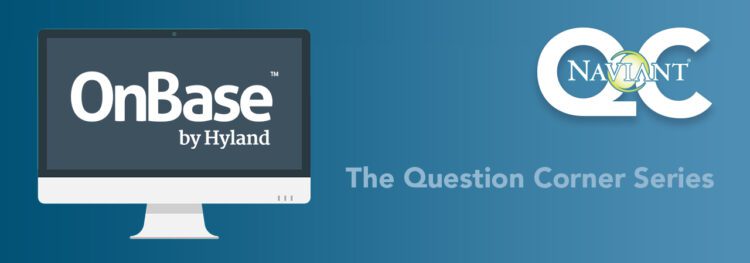When it comes to managing your organization’s documents and business content, SharePoint and OnBase are two of the biggest names in the game.
Still, they are far from interchangeable. Both options come with different features, strengths, and weaknesses that make them uniquely suited for different use cases.
So, this guide will break down the differences between these tools to help you determine which is the best fit for your primary use cases. This way, you’ll be able to confidently make the ideal investment for your organization.
High-Level Overview: What’s the Difference Between SharePoint and OnBase?
Beyond the obvious content storage capability both tools have, they have their own specialties:
SharePoint is best suited for organizations that need to improve their cross-departmental document collaboration and file sync. As a result, it may be a good fit if you’re chasing goals like:
- Helping your project management team be more efficient
- Increase your users’ access to files, data, and images, no matter their department
OnBase is best suited for organizations that need enterprise content management (ECM) as well as workflow capabilities. This means it might be your best option if you’re looking to:
- Automate workflows
- Manage your content analytics and reporting
Feature Comparison: SharePoint vs. OnBase
Collaboration Tools
- SharePoint: It’s designed for teamwork, with co-authoring, version control, templates, and mobile access all baked in.
- OnBase: It supports collaboration, too, but with more structure, offering task notifications, user permissions, and document routing.
Document Storage & Management
- SharePoint: It’s great for everyday content, but since it isn’t built for enterprise-scale document management, it comes with storage limits like:
- 25 TB per site
- 1 TB plus 10BG per license
- Up to 300 licenses per organization
- 2 million sites per organization
- OnBase: It’s built for scale, so it lets you store millions of documents, apply granular permissions, and stay compliant with industry regulations.
Workflow Automation
- SharePoint: It offers customizable workflows for cross-team collaboration and enhanced efficiency. It comes with built-in workflows that you can customize to fit your business needs, such as approvals, feedback and signature collection, and publishing approval.
- OnBase: It takes workflow automation even further with a no-code workflow management engine consisting of customizable life cycles that OnBase reports on in real time.
Integration
- SharePoint: It seamlessly integrates with Microsoft tools like Teams, PowerApps, and third-party platforms like Salesforce and Jira.
- OnBase: It’s built to fit into more complex tech stacks. It even integrates with enterprise systems like JD Edwards, DocuSign, and Adobe Sign.
The Pros & Cons: SharePoint and OnBase
SharePoint
The Pros:
- Centralized content storage
- Highly customizable
- Scalable with the option to develop multiple layers of sites with additional licenses
- Rich feature set for collaboration
The Cons:
- Steeper learning curve when it comes to configuration
- Requires ongoing maintenance
- Feature set can be hard to navigate
- Search functionality could be better
OnBase
The Pros:
- User-friendly interface
- Reliable, secure document storage
- Deep customization options
- Strong compliance and audit capabilities
The Cons:
- Doesn’t integrate easily with outdated software
- Updating old forms and workflows can be tricky
- No drag-and-drop for importing multiple files
Take Your Pick
As we’ve seen here, there’s no single right tool for every organization.
If you’re focused on managing, optimizing, and storing documents and images across various departments, ShareBase may be your answer.
But if you’re aiming to automate high volumes of documents across your enterprise, OnBase may be better.
Want extra guidance with finding the perfect solution to your organization’s problems? Drop a comment or question in the chat below. We’d be happy to hear from you.






